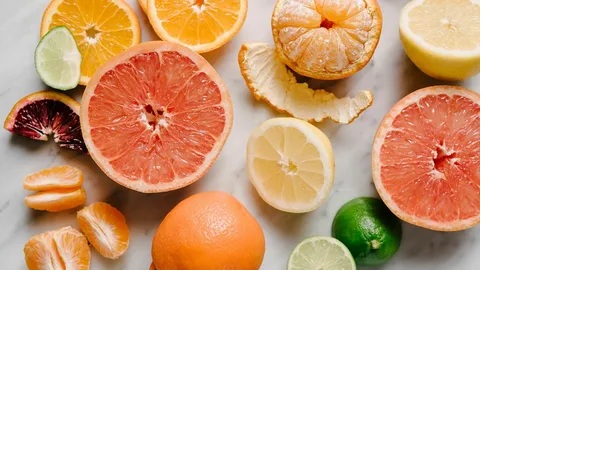Sour foods, with their tangy and acidic flavor profiles, have captivated taste buds around the world for centuries. From citrus fruits to fermented delicacies, sour foods offer a unique culinary experience that stimulates the palate and adds depth to dishes. In this comprehensive guide, we’ll explore 13 lip-puckering sour foods, uncovering their origins, nutritional benefits, and culinary uses.
Lemons
Lemons, with their bright yellow skin and tart juice, are a quintessential sour fruit used in countless culinary applications. Rich in vitamin C and antioxidants, lemons add zing to beverages, salads, marinades, and desserts. From classic lemonade to tangy salad dressings, lemons are prized for their refreshing acidity and versatility in the kitchen.
Limes
Similar to lemons, limes boast a tart and citrusy flavor that enhances a wide range of dishes. Whether squeezed over tacos, mixed into cocktails, or used in marinades and sauces, limes impart a vibrant acidity that balances out savory and sweet flavors. Additionally, lime zest adds aromatic complexity to baked goods and desserts.
Grapefruit
Grapefruit is known for its bittersweet flavor profile, characterized by a tangy acidity tempered with a hint of sweetness. Rich in vitamin C, fiber, and antioxidants, grapefruit offers numerous health benefits, including immune support and improved digestion. Enjoyed fresh or juiced, grapefruit adds a refreshing burst of flavor to salads, smoothies, and cocktails.
Sour Cherries
Sour cherries, also known as tart cherries, have a distinctively tangy flavor that sets them apart from their sweet counterparts. These ruby-red fruits are prized for their tartness, which lends itself well to pies, jams, sauces, and desserts. Sour cherries are also used to make tart cherry juice, which has been studied for its potential health benefits, including reducing inflammation and improving sleep quality.
Tamarind
Tamarind, a tropical fruit native to Africa, is renowned for its tangy and sour taste. The pulp of the tamarind pod is used in various cuisines to add acidity and depth of flavor to dishes. Tamarind is a key ingredient in many savory and sweet dishes, including chutneys, sauces, soups, curries, and candies.
Fermented Vegetables
Fermented vegetables, such as sauerkraut, kimchi, and pickles, undergo a natural fermentation process that produces lactic acid, giving them their signature sour flavor. Fermented vegetables are not only tangy and flavorful but also rich in probiotics and beneficial bacteria that support gut health. Enjoy fermented vegetables as a side dish, condiment, or ingredient in sandwiches, salads, and wraps.
Greek Yogurt
Greek yogurt, with its thick and creamy texture, has a slightly sour taste due to the presence of lactic acid produced during fermentation. This tangy yogurt is a versatile ingredient in both sweet and savory dishes, including smoothies, dips, sauces, and desserts. Greek yogurt is prized for its probiotic content, which promotes digestive health and supports a healthy gut microbiome.
Kombucha
Kombucha is a fermented tea beverage made from sweetened tea and a symbiotic culture of bacteria and yeast (SCOBY). During fermentation, the SCOBY produces acids that give kombucha its characteristic sour flavor. This fizzy and tangy drink is not only refreshing but also packed with probiotics, antioxidants, and organic acids that support overall health and well-being.
Sour Candy
Sour candies, such as sour gummies, sour belts, and sour patches, are beloved for their intense tartness and puckering effect. These candies typically contain citric acid or malic acid, which contribute to their sour taste. While sour candies are enjoyed as a treat, moderation is key due to their high sugar content.
Rhubarb
Rhubarb, with its vibrant pink stalks and tart flavor, is a versatile ingredient in both sweet and savory dishes. Often used in pies, crisps, jams, and compotes, rhubarb adds a tangy acidity that balances out the sweetness of other ingredients. Rhubarb is also used to make sauces, syrups, and cocktails, adding a bright and refreshing twist to culinary creations.
Sour Grapes
Sour grapes, also known as unripe or green grapes, have a tart and tangy flavor that differs from their ripe counterparts. While not typically consumed raw due to their sourness, sour grapes are used in cooking and winemaking to add acidity and complexity to dishes and wines.
Fermented Dairy Products
Fermented dairy products, such as kefir, buttermilk, and sour cream, undergo a fermentation process that produces lactic acid, resulting in a tangy and sour flavor. These dairy products are used in a variety of culinary applications, including baking, cooking, and as condiments or toppings for savory dishes.
Citric Acid
Citric acid, a natural compound found in citrus fruits and other sour-tasting foods, is often used as a flavoring agent in processed foods and beverages. While it occurs naturally in fruits like lemons, limes, and oranges, citric acid is also commercially produced and added to foods for its sour taste and preservative properties.
Conclusion:
Sour foods offer a tantalizing sensory experience that awakens the palate and adds depth to culinary creations. From tangy citrus fruits to fermented delicacies, sour foods are prized for their acidity, versatility, and nutritional benefits. Whether enjoyed fresh, fermented, or as a flavoring agent, sour foods play a prominent role in cuisines around the world, delighting taste buds and enhancing the dining experience. Incorporate these lip-puckering delights into your meals and snacks to explore new flavors and reap the health benefits they have to offer.

